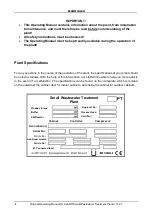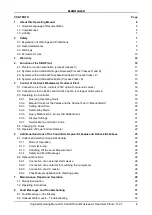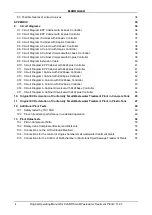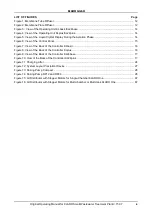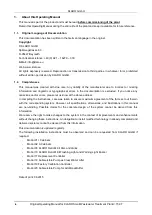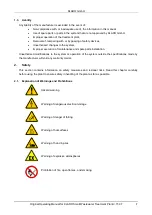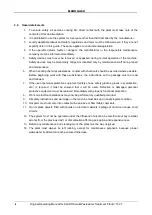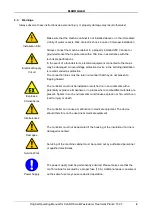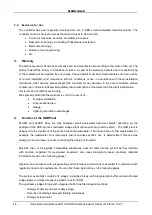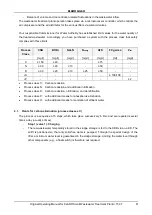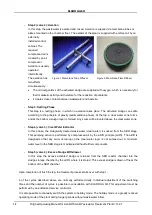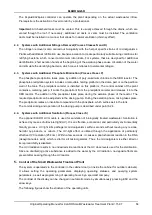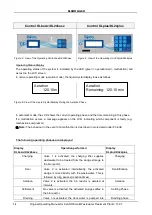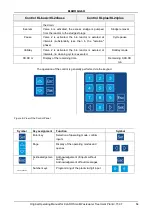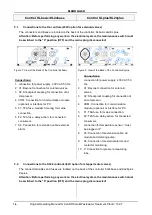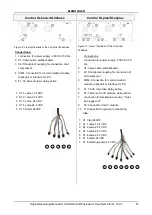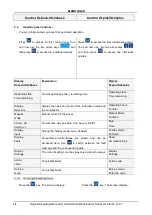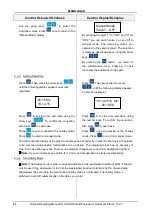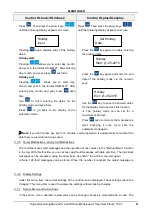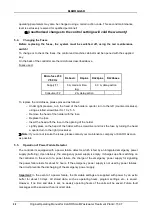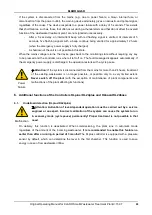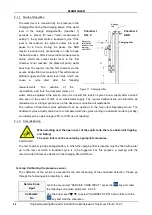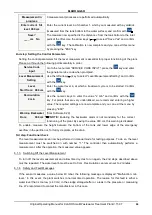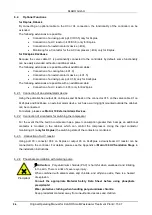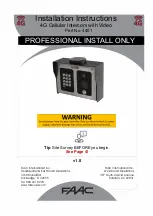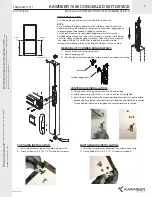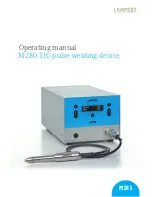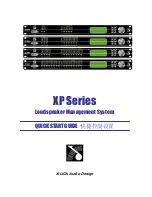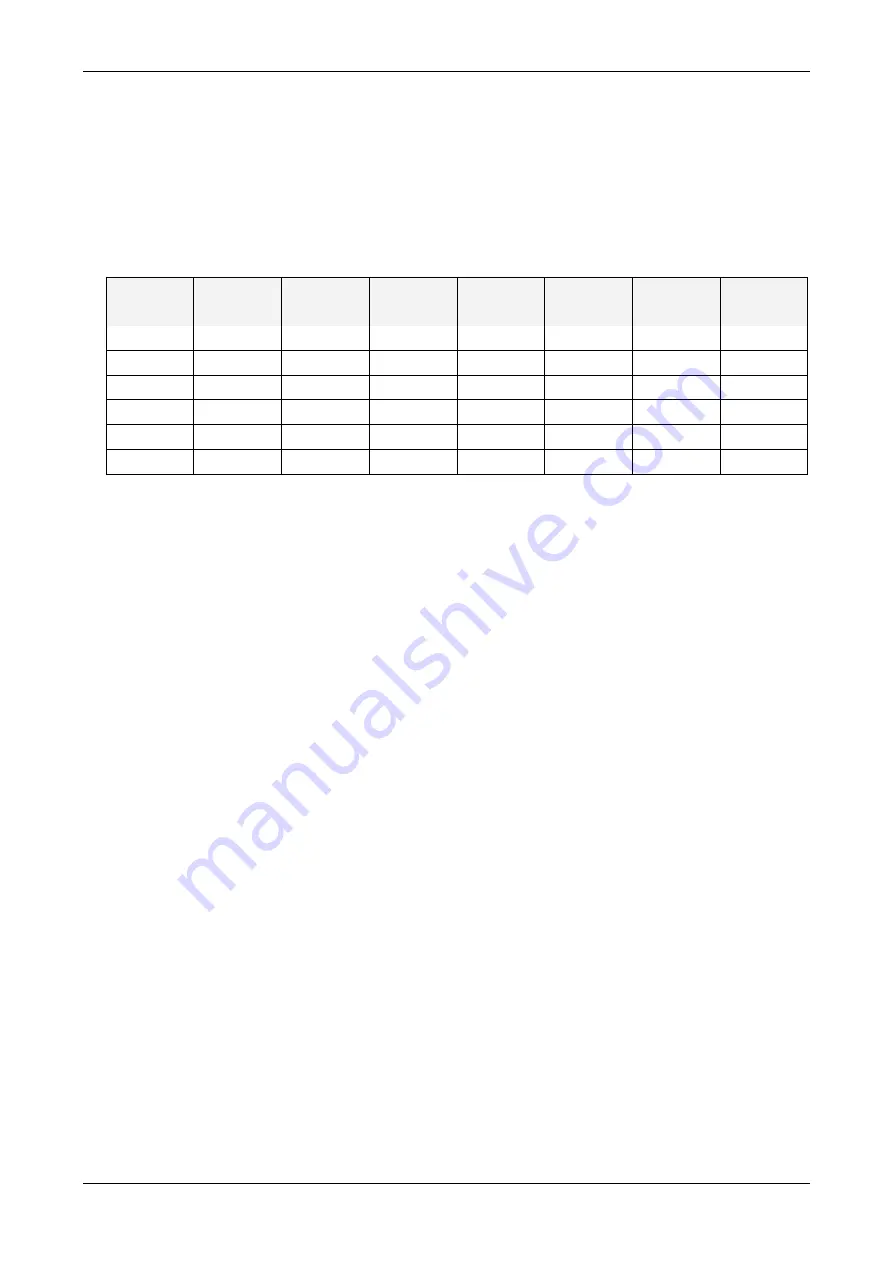
KLARO GmbH
10
Original Operating Manual for KLARO Small Wastewater Treatment Plant V.15.07
2.4. Exclusion for Use
The controller has been specially developed for use in SBR small wastewater treatment plants. The
controller must not be used in areas that pose a threat to life and limb:
•
Control of machines, vehicles, and safety processes,
•
Research technology in handling of hazardous substances,
•
Medical technology,
•
Nuclear power engineering,
•
etc.
3.
Warranty
The plant/conversion kit has been dimensioned and manufactured according to the state of the art. The
product has left the factory in a faultless condition. As part of the warranty, defects due to manufacturing
or the material will be repaired free of charge. These defects must have demonstrably occurred in spite
of correct installation and compliance with the conditions of use in accordance with these installation
instructions. After delivery, please inspect the controller for any damage. In the event of defects, please
contact your contractors/dealer immediately with a description of the defect and the plant identification.
Our terms and conditions are binding.
We expressly state that the warranty is void in the event of:
•
Improper installation,
•
Unconventional use,
•
Deluge,
•
Lightning and other overvoltages.
4.
Function of the SBR Plant
KLARO and KLARO Easy are fully biological small wastewater treatment plants, operating on the
principle of the SBR process (activated sludge plant with sequencing batch reactor) . The SBR plant is
designed for the treatment of the entire household wastewater. The introduction of other wastewater, for
example, the wastewater from restaurants and/or business entities, etc., is permissible if this use was
already known and taken into account during the design of the plant.
Biocides, toxic, or biologically incompatible substances must not enter into the system as they interfere
with bacteria, important for wastewater treatment, and cause biological process problems (detailed
information found on the following pages).
Operation in accordance with our operating and maintenance instructions is essential for compliance with
regulatory treatment requirements. You can find these instructions on the following pages.
The system essentially consists of 2 stages: A sludge storage with integrated pre-buffer and an activated
sludge stage in a closed sequencing batch reactor (SBR).
The upstream sludge storage with integrated buffer has the following functions:
- Storage of primary and secondary sludge,
- Retention of settling solids and floating substances,
- Storage of feed water,
KLARO GmbH
Original Operating Manual for KLARO Small Wastewater Treatment Plant V.15.07
11
- Balance of volume and concentration-related fluctuations in the wastewater inflow.
The wastewater treatment plant operation takes place via a microprocessor controller, which controls the
air compressor and the air distributor for the various lifters via solenoid valves.
Your responsible Commissioner for Water Authority has established limit values for the water quality of
the treated wastewater. Accordingly, you have purchased a system with the process class that safely
complies with those limits.
Process
Class
CSB
BOD
5
NH
4
-N
N
anorg
AFS
FC germs
P
tot
[mg/l]
[mg/l]
[mg/l]
[mg/l]
[mg/l]
[ml]
[mg/l]
C
≤ 150
≤ 40
-
-
≤ 75
-
-
N
≤ 90
≤ 20
≤ 10
-
≤ 50
-
-
D
≤ 90
≤ 20
≤ 10
≤ 25
≤ 50
-
-
+S
-
-
-
-
-
≤ 100/100
-
+P
-
-
-
-
-
-
≤ 2
•
Process class C: Carbon reduction
•
Process class N: Carbon reduction and additional nitrification
•
Process class D: Carbon reduction, nitrification, and denitrification
•
Process class P: with additional means for phosphorus elimination
•
Process class H: with additional means for sanitation of effluent water
4.1. Plants for carbon elimination (process classes C)
The process is a sequence of 5 steps, which take place successively in time and are repeated several
times a day (usually 4 times).
-
Step 1 (valve 1): Charging
-
The raw wastewater temporarily stored in the sludge storage is fed to the SBR via an airlift. The
airlift is positioned so that only solid-free water is pumped. Through the special design of the
lifter, a minimum water level is guaranteed in the sludge storage. Limiting the water level through
other components (e.g., a float switch) is therefore not required.
KLARO GmbH
2
Original Operating Manual for KLARO Small Wastewater Treatment Plant V.15.07
IMPORTANT:
•
This Operating Manual contains information about the plant, from installation
to maintenance, and must therefore be read before commissioning of the
plant!
•
All safety instructions must be observed!
•
The Operating Manual must be kept readily available during the operation of
the plant!
Plant Specifications
For any questions in the course of the operation of the plant, the specifications of your plant should
be noted as follows. With the help of this information, our staff will be able to help you more quickly
in the event of a malfunction. The specifications can be found on the nameplate, which is located
on the outside of the cabinet door for indoor cabinets, and inside the cabinet for outdoor cabinets.
Small Wastewater Treatment
Plant
PT
Sludge storage
Buffer
SB-Reactor
Approval No.:
Process class:
Certified:
Cabinet:
Controller:
Compressor:
Denomination:
Serial No.:
Article No.:
Additional module:
Article No.:
El. Connected load:
KLARO GmbH
Original Operating Manual for KLARO Small Wastewater Treatment Plant V.15.07
3
CONTENTS
Page
1.
About this Operating Manual
6
1.1.
Original Language of Documentation
6
1.2.
Completeness
6
1.3.
Liability
7
2.
Safety
7
2.1.
Explanation of Warnings and Prohibitions
7
2.2.
Hazard statements
8
2.3.
Warnings
9
2.4.
Exclusion for Use
10
3.
Warranty
10
4.
Function of the SBR Plant
10
4.1.
Plants for carbon elimination (process classes C)
11
4.2.
Systems with Additional Nitrogen Removal (Process Classes N and D)
13
4.3.
Systems with Additional Phosphate Elimination (Process Class +P)
13
4.4.
Systems with Additional Sanitation (Process Class +S)
13
5.
Control of the Small Wastewater Treatment Plant
13
5.1.
Connections to the KL-controls (230V option for solenoid valves)
16
5.2.
Connections to the KL24 controller(24V option for stepper motor valves)
16
5.3.
Operating the Controller
18
5.3.1.
Querying Operating Hours
18
5.3.2.
Manual Control of the Valves and the Cabinet Fan in "Manual Mode"
19
5.3.3.
Setting Date/Time
20
5.3.4.
Set Holiday Mode
20
5.3.5.
Query Malfunctions - Query Old Malfunctions
21
5.3.6.
Display Settings
21
5.3.7.
Service Menu and Action Code
21
5.4.
Changing the Fuses
22
5.5.
Operation of Power Failure Detector
22
6.
Additional functions of the Controllers KLplus/ KL24plus and KLbasic/KL24base
23
6.1.
Underload detection (KLplus/KL24plus)
23
6.1.1.
Mode of Operation
24
6.1.2.
Commissioning
24
6.1.3.
Switching Off the Level Measurement
25
6.1.4.
Safety and Fault Messages
25
6.2.
Optional Functions
26
6.2.1.
Connection of an external alarm device
26
6.2.2.
Connection of a contactor for switching the compressor
26
6.2.3.
Connection of a UV reactor
26
6.2.4.
Phosphate precipitation with metering pump
26
7.
Maintenance, Repair and Operation
28
7.1.
Sludge Evacuation
28
7.2.
Operating Instructions
29
8.
Fault Messages and Troubleshooting
31
8.1.
Fault Message on the Display
32
8.2.
Unusual Water Levels - Troubleshooting
33
KLARO GmbH
2
Original Operating Manual for KLARO Small Wastewater Treatment Plant V.15.07
IMPORTANT:
•
This Operating Manual contains information about the plant, from installation
to maintenance, and must therefore be read before commissioning of the
plant!
•
All safety instructions must be observed!
•
The Operating Manual must be kept readily available during the operation of
the plant!
Plant Specifications
For any questions in the course of the operation of the plant, the specifications of your plant should
be noted as follows. With the help of this information, our staff will be able to help you more quickly
in the event of a malfunction. The specifications can be found on the nameplate, which is located
on the outside of the cabinet door for indoor cabinets, and inside the cabinet for outdoor cabinets.
Small Wastewater Treatment
Plant
PT
Sludge storage
Buffer
SB-Reactor
Approval No.:
Process class:
Certified:
Cabinet:
Controller:
Compressor:
Denomination:
Serial No.:
Article No.:
Additional module:
Article No.:
El. Connected load:
KLARO GmbH
Original Operating Manual for KLARO Small Wastewater Treatment Plant V.15.07
3
CONTENTS
Page
1.
About this Operating Manual
6
1.1.
Original Language of Documentation
6
1.2.
Completeness
6
1.3.
Liability
7
2.
Safety
7
2.1.
Explanation of Warnings and Prohibitions
7
2.2.
Hazard statements
8
2.3.
Warnings
9
2.4.
Exclusion for Use
10
3.
Warranty
10
4.
Function of the SBR Plant
10
4.1.
Plants for carbon elimination (process classes C)
11
4.2.
Systems with Additional Nitrogen Removal (Process Classes N and D)
13
4.3.
Systems with Additional Phosphate Elimination (Process Class +P)
13
4.4.
Systems with Additional Sanitation (Process Class +S)
13
5.
Control of the Small Wastewater Treatment Plant
13
5.1.
Connections to the KL-controls (230V option for solenoid valves)
16
5.2.
Connections to the KL24 controller(24V option for stepper motor valves)
16
5.3.
Operating the Controller
18
5.3.1.
Querying Operating Hours
18
5.3.2.
Manual Control of the Valves and the Cabinet Fan in "Manual Mode"
19
5.3.3.
Setting Date/Time
20
5.3.4.
Set Holiday Mode
20
5.3.5.
Query Malfunctions - Query Old Malfunctions
21
5.3.6.
Display Settings
21
5.3.7.
Service Menu and Action Code
21
5.4.
Changing the Fuses
22
5.5.
Operation of Power Failure Detector
22
6.
Additional functions of the Controllers KLplus/ KL24plus and KLbasic/KL24base
23
6.1.
Underload detection (KLplus/KL24plus)
23
6.1.1.
Mode of Operation
24
6.1.2.
Commissioning
24
6.1.3.
Switching Off the Level Measurement
25
6.1.4.
Safety and Fault Messages
25
6.2.
Optional Functions
26
6.2.1.
Connection of an external alarm device
26
6.2.2.
Connection of a contactor for switching the compressor
26
6.2.3.
Connection of a UV reactor
26
6.2.4.
Phosphate precipitation with metering pump
26
7.
Maintenance, Repair and Operation
28
7.1.
Sludge Evacuation
28
7.2.
Operating Instructions
29
8.
Fault Messages and Troubleshooting
31
8.1.
Fault Message on the Display
32
8.2.
Unusual Water Levels - Troubleshooting
33
11


